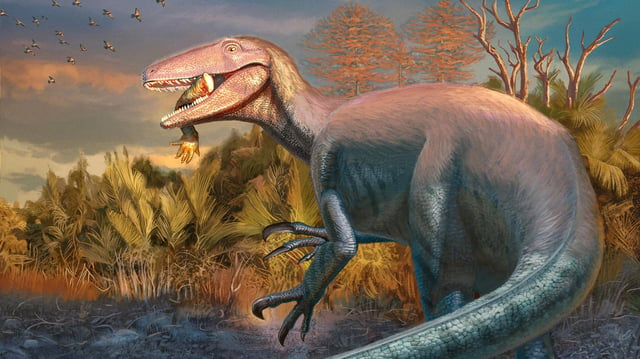Overview
- The peer-reviewed description in Nature Communications names Joaquinraptor casali based on fossils from the Lago-Colhué-Huapi Formation in Chubut, Argentina.
- Recovered elements include parts of the skull and jaw, forelimbs and hindlimbs, and multiple tail vertebrae, making it among the most complete megaraptoran specimens.
- Researchers estimate a length of about seven meters and a mass likely exceeding one tonne, with a dagger-like thumb claw larger than a human hand.
- A crocodilian relative’s limb bone wedged between the jaws bears tooth marks, which the team interprets as evidence of feeding or a conflict between predators.
- Bone microstructure suggests the individual was near adult but not fully grown, dating to roughly 70–66 million years ago in the late Cretaceous.
